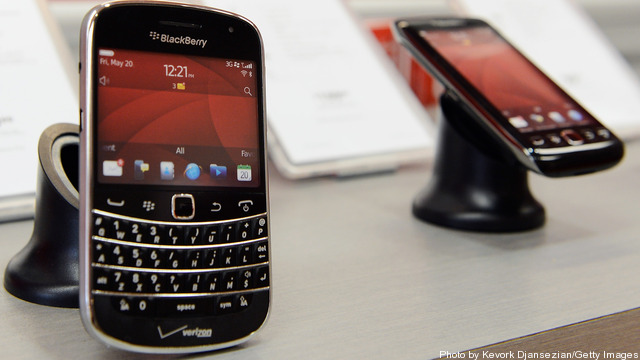Self-driving vehicles have been imagined for many years, and several high-profile autonomous vehicle research and development programs have shown that the technology is getting closer to market readiness in recent years. With the advent of more accurate global positioning system navigation, as well as onboard sensors and the associated advanced driver assistance systems, cars now… Keep reading →
networks
Three-Quarters of Vehicles Sold Worldwide by 2035 Will Have Autonomous Features, Forecasts Navigant Research
By businesswireThe American Council for Technology and Industry Advisory Council (ACT-IAC) today announced the plenary session speakers and program agenda for the 23nd Annual Executive Leadership Conference (ELC), the premier event in the government information technology (IT) community. This year’s theme of “Driving Results in a 21st Century Government” will focus on the transformational changes that… Keep reading →
 While Army forces in Afghanistan have more bandwidth and gadgetry than ever, bases back home still make do with archaic copper-wire telephone switches. As the war winds down and units increasingly operate out of the US, the challenge for the Army’s CIO is to move the whole service to a single set of compatible, cloud-based systems.
While Army forces in Afghanistan have more bandwidth and gadgetry than ever, bases back home still make do with archaic copper-wire telephone switches. As the war winds down and units increasingly operate out of the US, the challenge for the Army’s CIO is to move the whole service to a single set of compatible, cloud-based systems.
“How do we get the network right?” Lt. Gen. Susan Lawrence, the Army’s Chief Information Officer, aka the G-6, asked at an Association of the US Army breakfast. “We’re going to propose that [cloud-based] strategy to [Chief of Staff] Gen. [Ray] Odierno on Saturday the 17th.” Keep reading →
 Research in Motion’s BlackBerry phones have historically been the device of choice for secure mobile communication in the government market. BlackBerries offered unique business-oriented capabilities but lacked sex appeal to draw consumers to its products. Yet for government agencies that needed to supply their workers with a robust, secure cell phone, the business features won out over giving users a device that was “magical.”
Research in Motion’s BlackBerry phones have historically been the device of choice for secure mobile communication in the government market. BlackBerries offered unique business-oriented capabilities but lacked sex appeal to draw consumers to its products. Yet for government agencies that needed to supply their workers with a robust, secure cell phone, the business features won out over giving users a device that was “magical.”
Now with the rise of BYOD (“bring you own device”) in government agencies, RIM is suddenly no longer an appealing option for consumers who are now asked to buy their own device and bring it to work.
___________________________________________________
This article originally appeared as a blog on “The New Information Economy.” For more news and insights on innovations at work in government, please sign up for the AOL Gov newsletter. For the quickest updates, like us on Facebook.
___________________________________________________ Keep reading →
 Army Maj.Gen. Mark Bowman, Joint Chiefs of Staff CIO.
Army Maj.Gen. Mark Bowman, Joint Chiefs of Staff CIO.
The U.S. military operates many of the world’s largest and most complex computer and communications networks, giving the Defense Department extraordinary capability and flexibility to conduct a vast assortment of global operations, from direct combat to humanitarian missions. Keep reading →
 In a move suggesting how quickly cloud computing is becoming part of the government IT mainstream, the Office of Management and Budget is requiring agencies to itemize their cloud computing initiatives in fiscal 2014 budget plans.
In a move suggesting how quickly cloud computing is becoming part of the government IT mainstream, the Office of Management and Budget is requiring agencies to itemize their cloud computing initiatives in fiscal 2014 budget plans.
The emphasis on cloud computing comes within the larger context of planned cuts to information technology spending. The guidance formalizes prior notices for agencies to “propose reductions in IT that represent 10% of their overall spending, and propose a reinvestment of at least 5%, and up to 10%, of these savings, in priority IT investments for OMB consideration.” Keep reading →

PENTAGON: The Army showed off an impressive array of battlefield wi-fi gadgetry today in the Pentagon courtyard, exhibiting new-found realism about what gadgets it might not need.
Consider the hardware to connect the individual foot soldier to the brigade-wide command network, which has been stripped down from a 14-pound prototype to a militarized smartphone plugged into a handheld radio. Keep reading →

Most federal agencies indicate having above-average IT programs for enabling telework and mobility and expect mobile device use to increase 20 percent by next year, according to a report released this week.
The report, released by the Telework Exchange, offers a snapshot of where federal agencies stand on enabling remote workers, and delivers a forecast for mobile IT investments. Keep reading →
 The U.S. Defense Department has accelerated its efforts to develop offensive cyber weapons that could be used to dismantle hostile military networks in countries where U.S. forces are operating, The Washington Post reported today.
The U.S. Defense Department has accelerated its efforts to develop offensive cyber weapons that could be used to dismantle hostile military networks in countries where U.S. forces are operating, The Washington Post reported today.
The report cites the Pentagon’s growing frustration with the military’s inability to disable enemy air defense systems and other military communications networks in places like Libya, where U.S. pilots flew combat missions to protect civilian populations from attacks by the Libyan army. That frustration has reportedly led to a five-year, $500 million budget infusion for the Defense Advanced Research Projects Agency (DARPA), the Pentagon’s main research and development organization, to fast track research into offensive cyber tools. Keep reading →